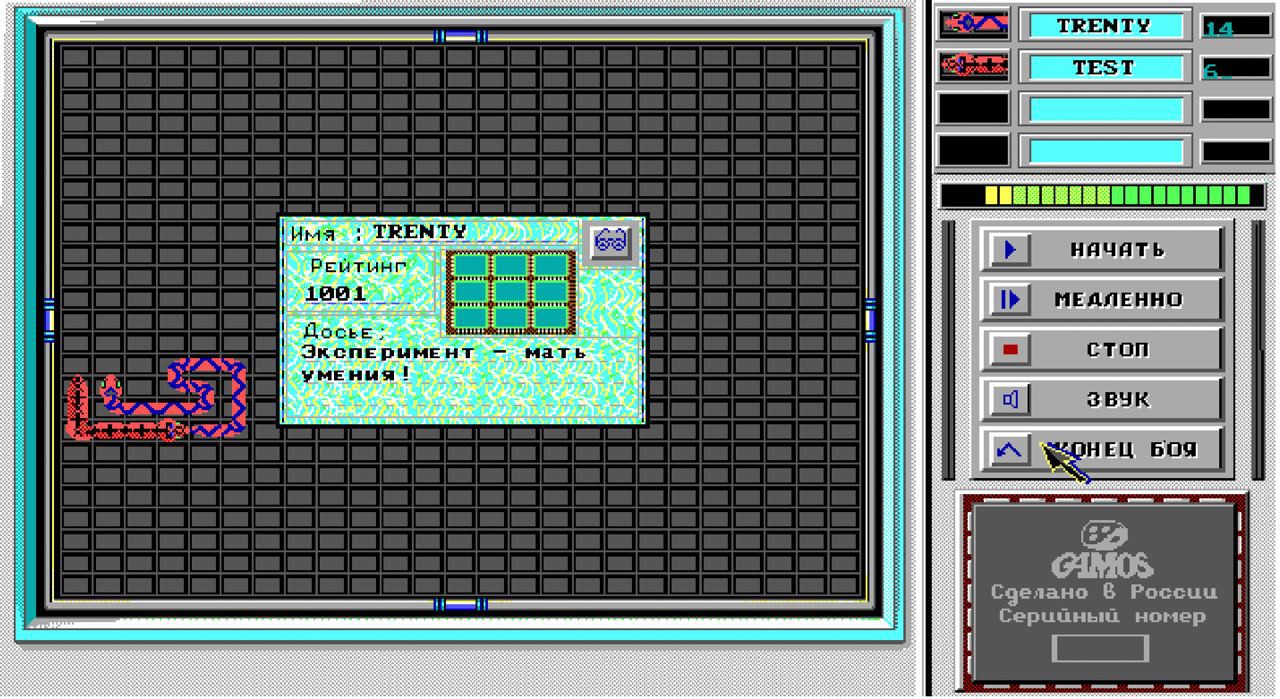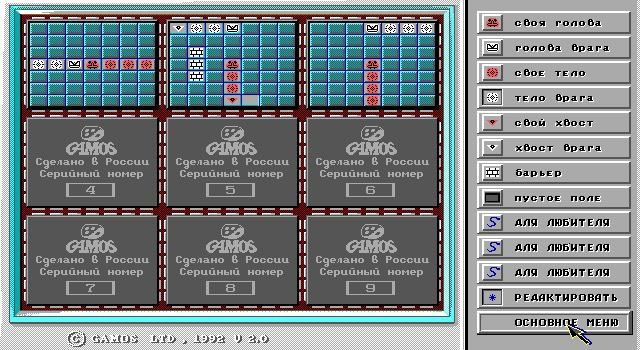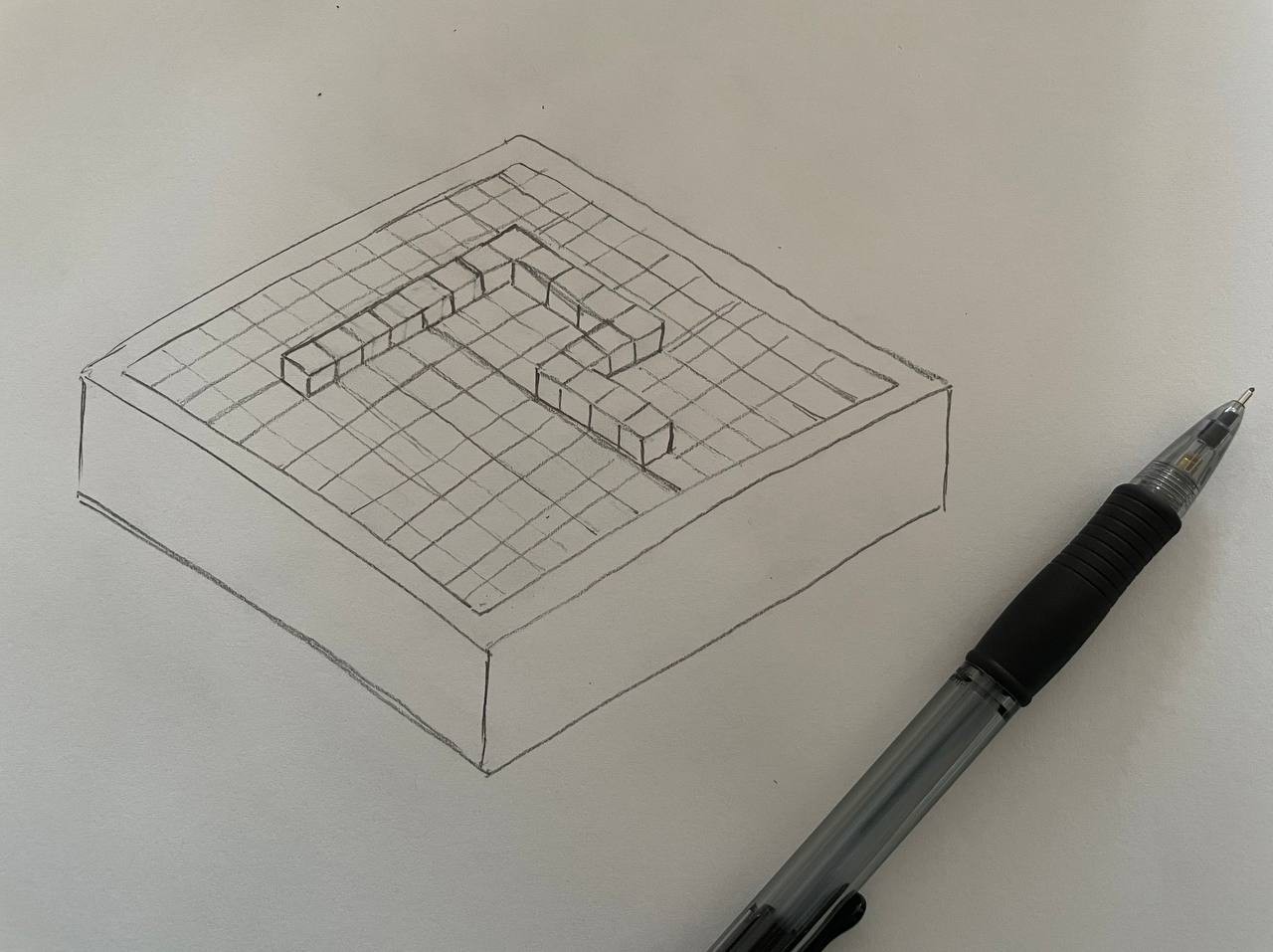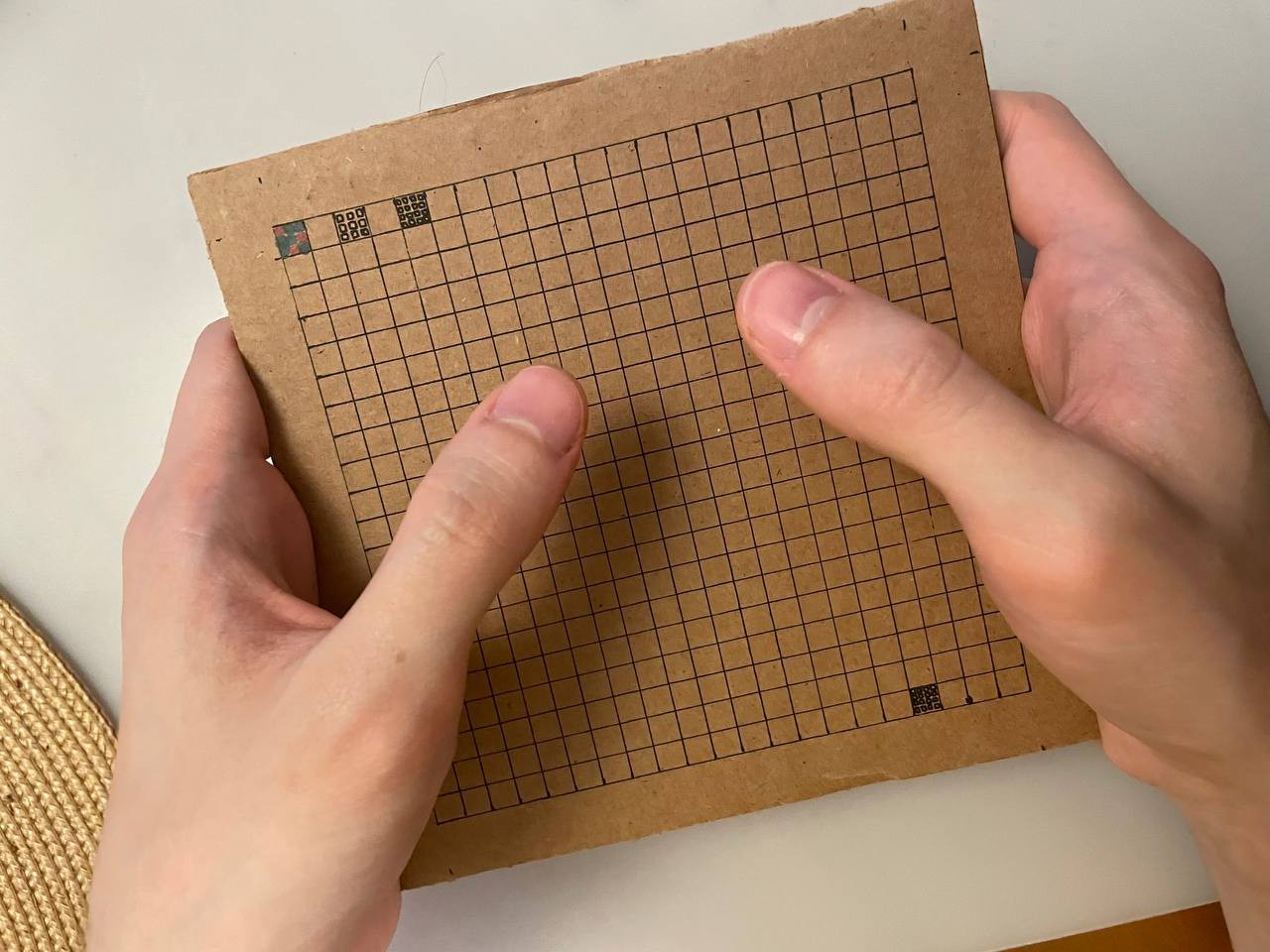So, a bit of background:
When I was a kid, one of my favorite games was a very geeky DOS game - Snake Battle (Змеиный Бой) by Gamos (You can play it here through DosBox right in the browser!). The essence of the game was that you had to program a snake and send it into the arena to compete with other snakes in biting off each other's tails :)

Over time, it had a couple of reincarnations like this one, and it was clearly inspired by one of the oldest games for programmers — CRobots.
But Snake Battle was actually brilliant compared to them because of its visual language used for writing the "brains" of the snakes: you were limited to just 9 slots of 7x7 cells, in which you "drew" game situations that the snake tried to apply on the field sequentially. This provided quite strict game frameworks, which fueled the excitement, and even as a child, you understood that the best champion snake also had only 9 "brains" in its head, and if you tried hard, you could approach or outsmart it. In purely programming games with full Turing-complete languages, the best snakes/agents are monstrous neural networks that sweaty nerdy researchers write over long months — the motivation to compete with them is significantly more phantom.

It should look something like this:
- A physical board of 21x21 (in the original game it was 25x25, but we programmers love everything to divide by 8, and 25 divides by 8 very wastefully)
- Each cell of the board is a small bistable plunger on a solenoid that can rise up and lower down: usually, the field is lowered, but the snake's body protrudes above it
- On the cap of each such plunger, there are 9 RGB LEDs to draw snakes and other objects
- Optionally, a phone app that pairs with the field via BLE and can launch games on the field. Or acts as a joystick, if you decided to run a regular snake game and eat apples
- All this is quite small, say no more than 15x15 cm, and runs on a battery.


But then I realized that there you could launch quite a large class of retro toys like puzzles, city builders, platformers, and other minesweepers. Especially if you make each plunger also a button (that is, you can press it with your finger or—possibly—by touching it in the lowered position—raise it.
For now, the question of what exactly would be interesting to launch there is open, we'll come back to it later.
 Dima Matasov
Dima Matasov
Discussions
Become a Hackaday.io Member
Create an account to leave a comment. Already have an account? Log In.